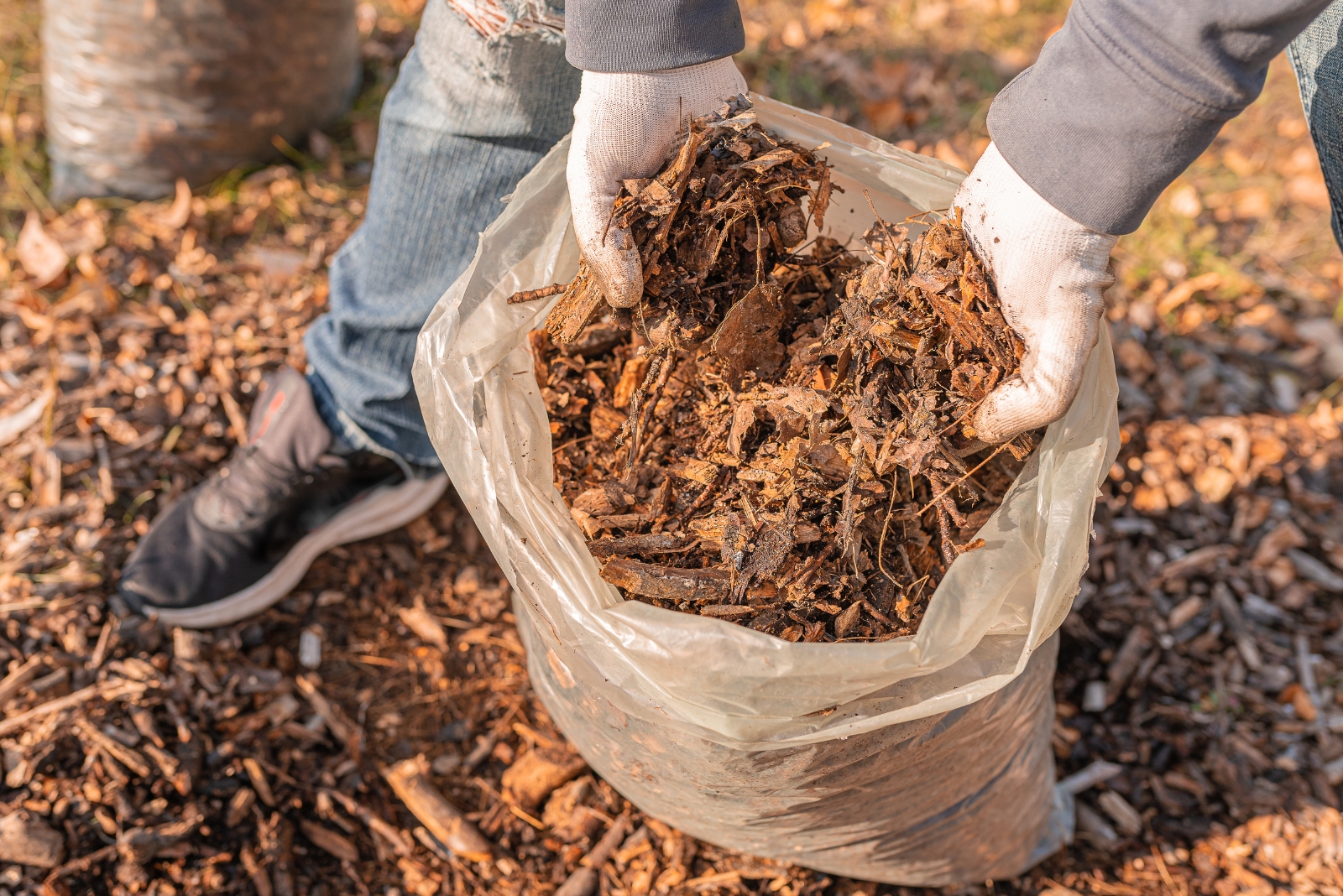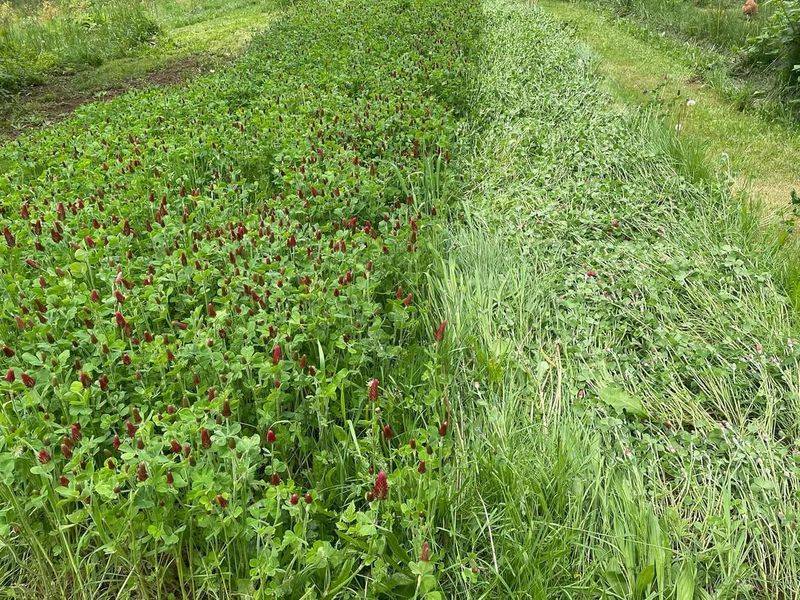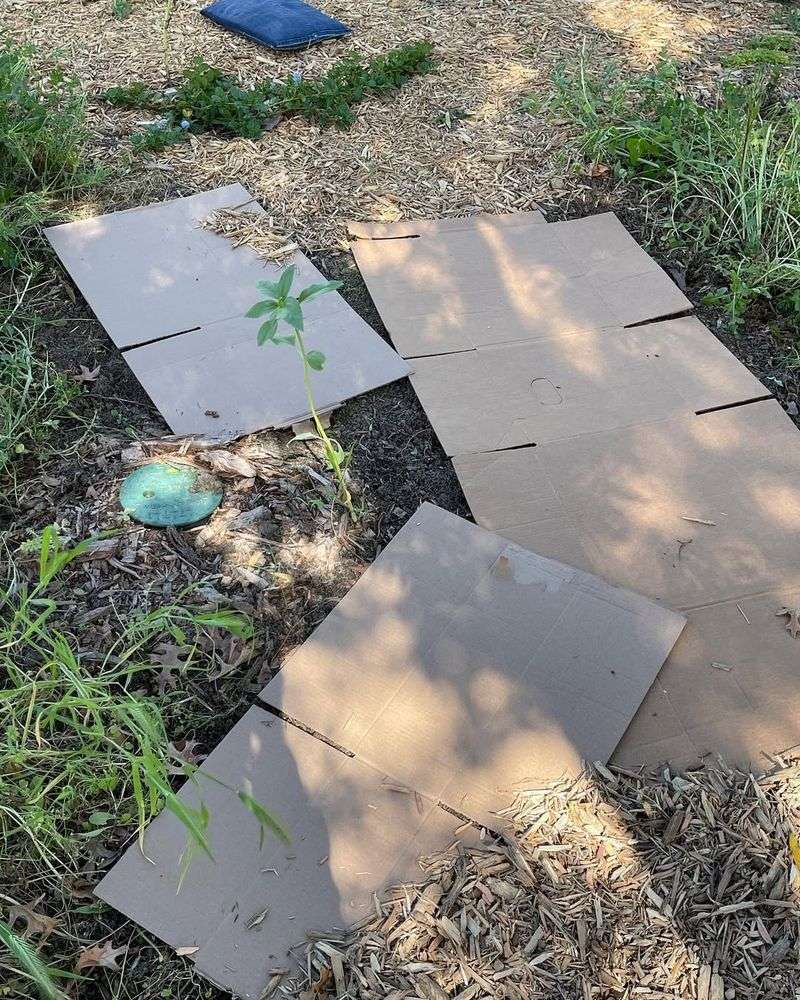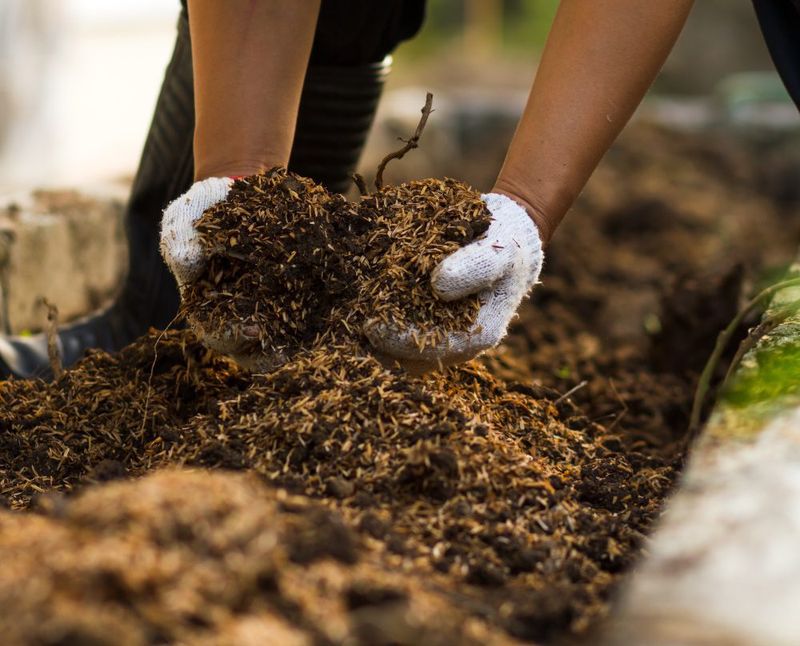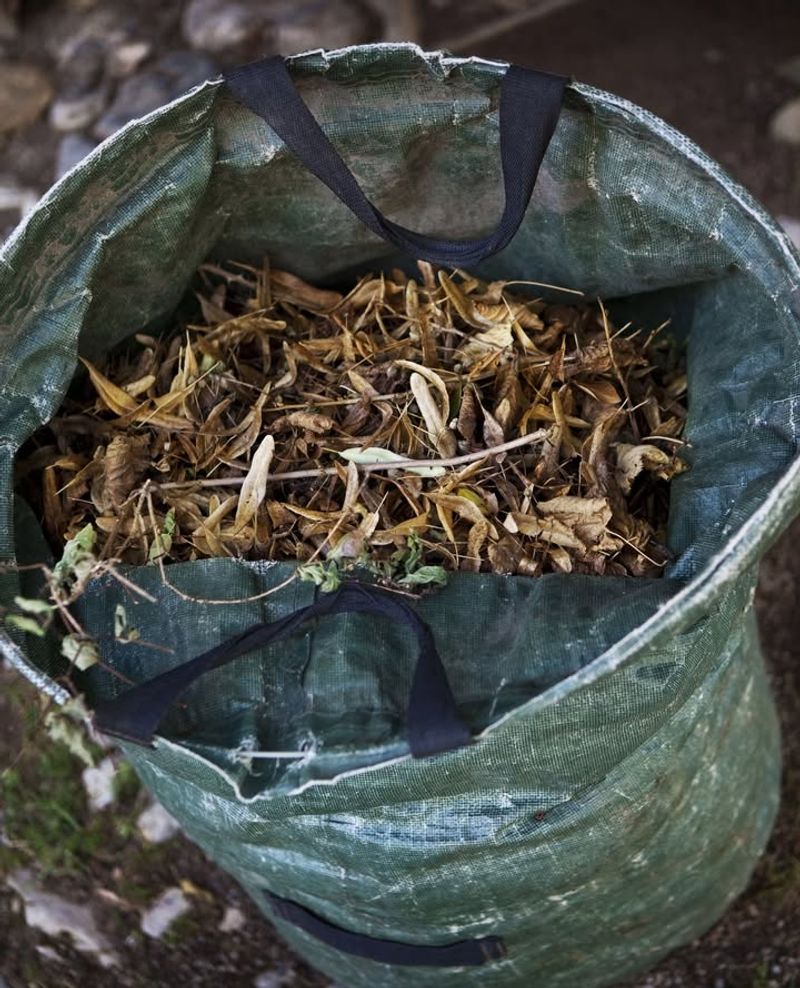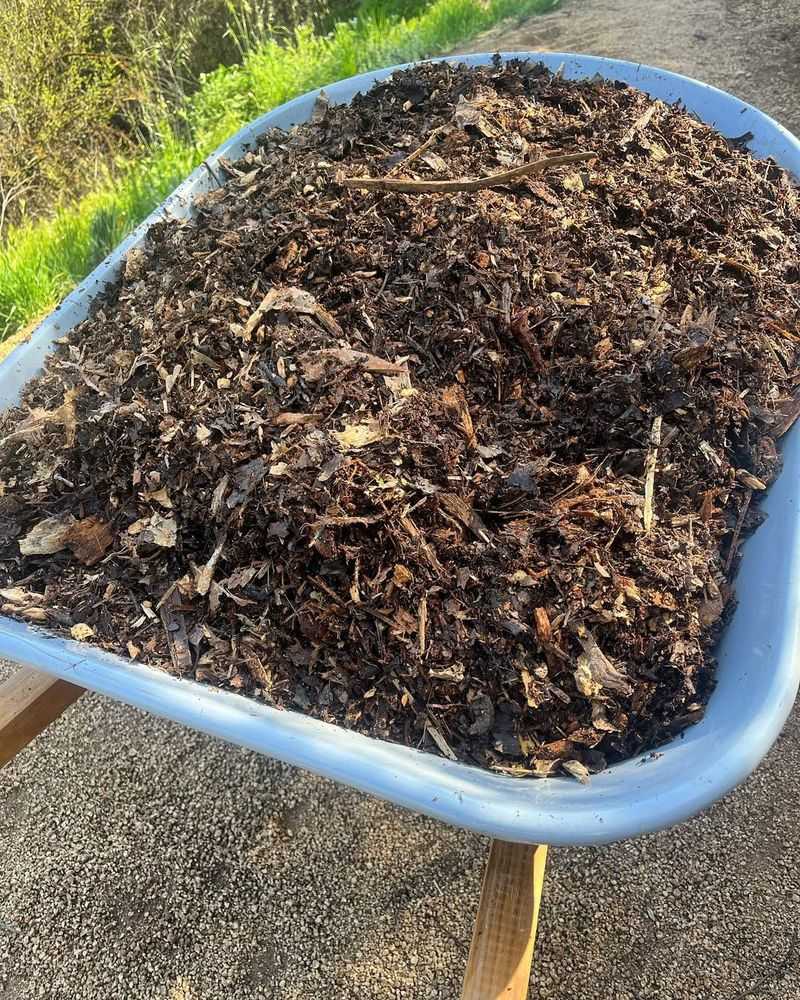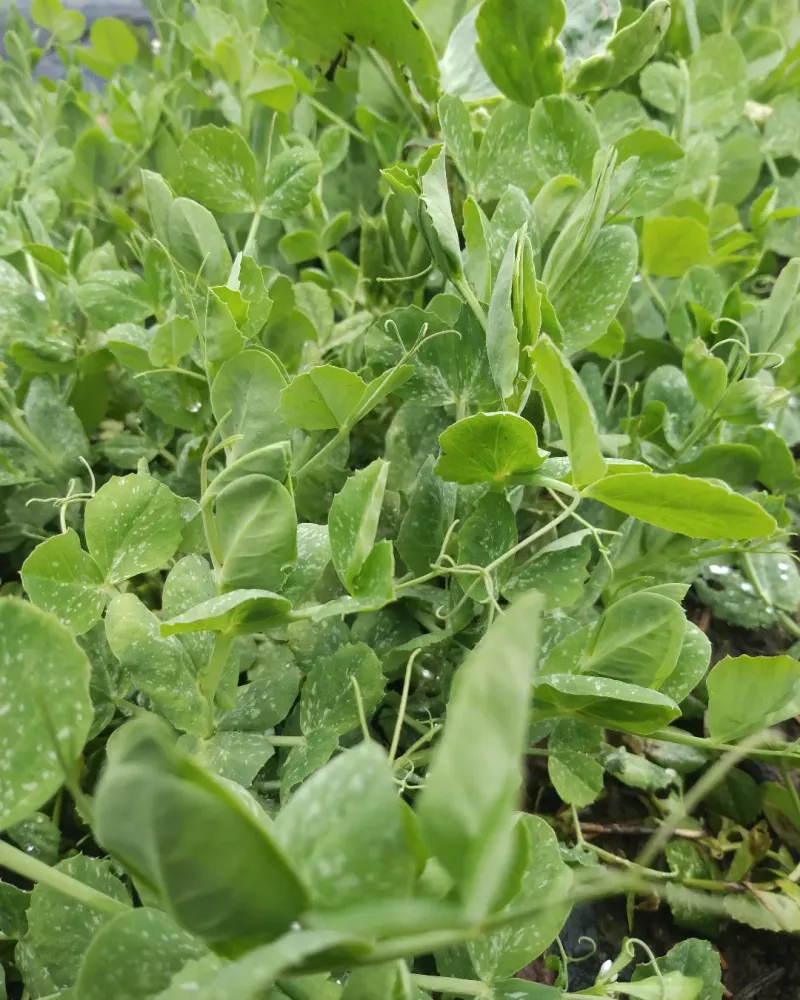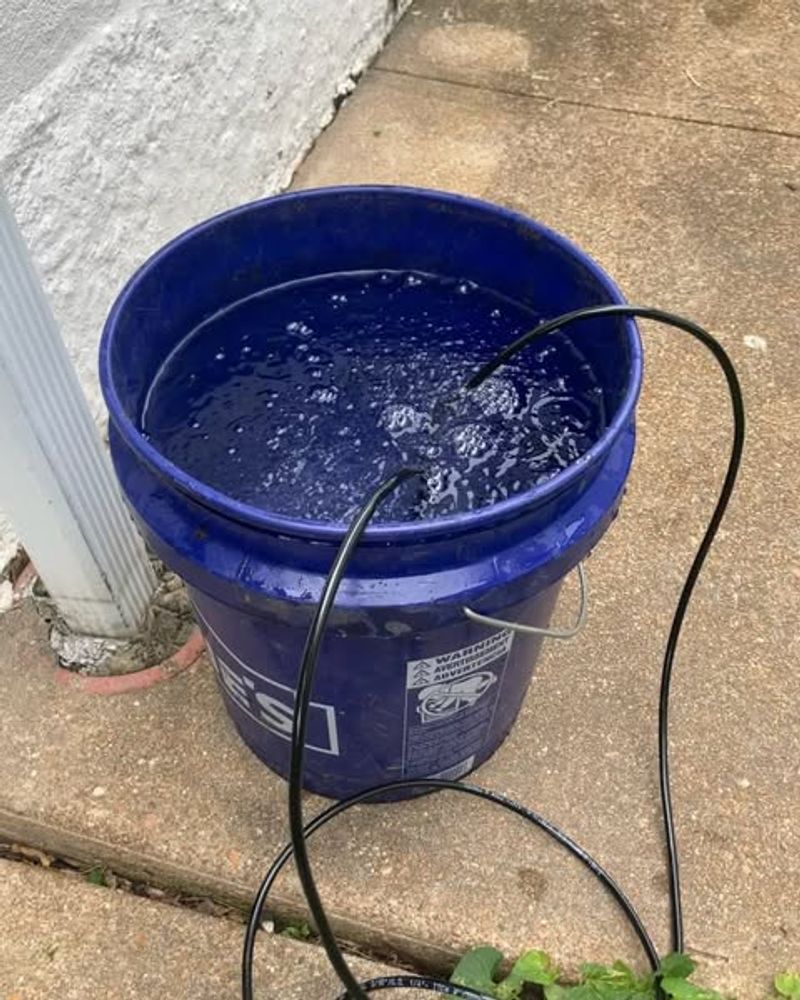Oregon’s cool, wet fall and winter months are actually perfect for improving your garden soil without digging or tilling. No-till methods protect the tiny organisms and natural structure that make soil healthy and productive.
By using these smart techniques during the dormant season, you can create rich, fertile ground that will be ready to grow amazing plants come spring.
1. Cover Cropping With Winter Rye And Clover
Planting winter cover crops transforms bare garden beds into living soil factories. Winter rye sends deep roots into the ground, breaking up compacted layers naturally while clover fixes nitrogen from the air.
Both plants protect soil from Oregon’s heavy rains and prevent erosion. When spring arrives, simply cut them down and leave the plant material on top as mulch.
The decomposing roots create channels for air and water while feeding beneficial microbes underground.
2. Sheet Mulching With Cardboard Layers
Cardboard layering smothers weeds while building incredible soil structure underneath. Spread plain cardboard boxes over garden beds, overlapping edges by several inches to block all light.
Top the cardboard with four to six inches of compost, leaves, or straw. Oregon’s winter moisture softens everything perfectly, and earthworms move in to feast.
By spring, the cardboard breaks down completely, leaving you with dark, crumbly soil ready for planting without ever touching a shovel.
3. Applying Aged Compost as Top Dressing
Spreading finished compost directly on the soil surface mimics how nature builds fertility in forests. Simply scatter two to three inches of dark, crumbly compost over your beds anytime during fall or winter.
Rain and earthworms gradually work the nutrients downward into the root zone. Microorganisms multiply rapidly in the moist Oregon climate, creating a living network that feeds plants.
Unlike tilling compost in, surface application preserves soil structure and protects beneficial fungi.
4. Leaf Mold Creation And Application
Oregon’s abundant fall leaves are gardening gold when transformed into leaf mold. Rake leaves into piles or stuff them into wire bins, then let winter rain do the work.
Within six to twelve months, leaves decompose into a dark, sweet-smelling material that holds moisture like a sponge. Spread this finished leaf mold several inches thick over garden beds.
It improves soil structure dramatically, encourages earthworm populations, and costs absolutely nothing except a little patience and collection effort.
5. Wood Chip Mulching For Pathways And Beds
Arborist wood chips provide long-lasting protection and slowly feed your soil as they decompose. Apply four to six inches of fresh chips on pathways and around perennial plants during fall.
Fungi colonize the chips, creating networks that help plants access nutrients and water more efficiently. Oregon’s wet winters prevent the chips from stealing nitrogen from your soil.
As the bottom layers break down over months, they create rich humus while the top layers suppress weeds beautifully.
6. Green Manure Crops For Nutrient Cycling
Fast-growing green manures like field peas and Austrian winter peas thrive in Oregon’s cool season. Broadcast seeds thickly over empty beds in early fall, then rake lightly to cover.
Plants grow vigorously through winter, capturing nutrients that might otherwise wash away in heavy rains. Before they set seed in spring, cut them at ground level.
Leave the nitrogen-rich plant material on the surface to decompose, feeding the next crop while roots decay underground.
7. Compost Tea Applications For Microbial Boost
Brewing compost tea multiplies beneficial bacteria and fungi that can be sprayed directly onto soil and plants. Fill a bucket with finished compost, add water, and let it steep for 24 hours with aeration.
Strain the liquid and apply it to garden beds during Oregon’s milder winter days. The living microorganisms colonize the soil, improving nutrient availability and disease resistance.
Monthly applications throughout the dormant season build a thriving underground ecosystem that supports vigorous spring growth naturally.

